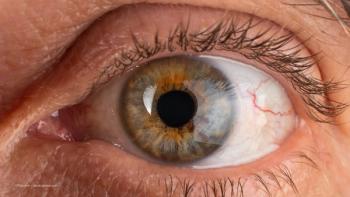
- April digital edition 2021
- Volume 13
- Issue 4
Biologic medications: The basics that every OD should know
This drug category is rapidly growing in the ophthalmic space, with more options in the pipeline
Biologic medications have long since been a group of high-tech chemicals known to improve and save lives. Previous generations included vaccines, insulin, and blood components, and the newer armamentarium features chemicals that treat cancers, autoimmune disease, wet age-related macular degeneration, and thyroid eye disease.1,2
Now that biologics have been approved for certain ophthalmic diseases, conditions, and indications (Table 14-12), every optometric physician needs to have a basic understanding of related nomenclature and pharmacology to help improve patient care outcomes.
Biologic basics
Biologic chemicals and traditional drugs (ie, small molecule drugs) are different in several ways. Most drugs and chemicals (nonbiologics) have a known structure that is easily synthesized and easily repeated (think brand-name and generic drugs), are small in size (compared with biologics), and may be synthetic. Additionally, most non-biologic drugs are not overly sensitive to percussion or movement and reasonable temperature changes during shipping and storage.
Biologics are engineered from a variety of sources, including animals, microorganisms, and humans. These agents are not easily synthesized or repeatable because they are complex, large structures that are inherently unstable with heat and percussive movement, and they tend to be easily contaminated with microorganisms during manufacturing.2,3,13,14
Lastly, biologic medications are more expensive compared with their small, chemical, synthetic brethren.2,3,13,14
Why, then, are so many biologics now available, with many more in the pipeline? The answer is simple: Biologics have the ability to treat diseases and conditions better than some traditional choices, and they also offer treatments or cures for diseases and conditions for which no other treatment options exist.2,3,13,14
Biosimilars
Biosimilar drugs are popping up everywhere and usually in tandem with biologics. In short, biosimilars are the closest thing to a “generic” biologic that practitioners will ever see because a true generic biologic is impossible to make. The term biosimilar denotes that the agent has proved to be highly similar to a corresponding biologic (originator, innovator, reference product) with no meaningful differences in pharmacology and pharmacotherapeutics, including purity, safety, and efficacy.
Although there is no clinically meaningful difference between a biologic and a biosimilar that has been made to be “highly similar,” they are not automatically interchangeable because production of a biologic, a complex molecule, is proprietary.
So, although the pharmaceutical company that manufactured the biologic owns the proprietary production and manufacturing of the drug, it does not own the actual structure. As such, most of the manufacturing time for a biosimilar is spent on duplicating the production of the innovator product with differences in clinically inactive components, whereas the pharmaceutical company that discovered the innovator product spends the majority of its time researching efficacy, safety, and pharmacokinetics.
This is different from the production process of a typical generic medication for a small molecule drug because the generic has the same active ingredients of a brand-name drug, and the manufacturer must prove the agent’s bioequivalence to the brand-name drug before it can receive FDA approval. Note that a biosimilar drug will never be exactly the same as the biologic drug, but it will be highly similar.
So, why use a biosimilar drug rather than a biologic drug? Cost. Biosimilars are generally much less expensive.13,15-20
Nomenclature
The nomenclature of biologic and biosimilar medications will begin to make logical sense once a practitioner learns a few basic rules and patterns. Monoclonal antibody (mAb) biologic names follow rules and patterns established by the World Health Organization’s International Nonproprietary Name (INN) Expert Group.21
The INN assigns the nonproprietary (generic or proper) names to biologics and other medications and therapies that are recognized worldwide as public property. For instance, substances that are considered to be similar in their pharmacology have a prefix, 2 common “stems” (the first indicating the mAb target; the second, the mAb source species), ending in mAb, and a 4-letter suffix (Table 221-23). This helps medical professionals and investigators recognize which agents have similar pharmacology.
Additionally, in 2017, the FDA determined that all new biologics should contain a unique (and generally random) 4-letter suffix that further identifies and differentiates each drug.23 This allows for improved pharmacovigilance where medical professionals and manufacturers can track every agent, both biologics and biosimilars.
Cenegermin-bkbj (Oxervate) offers an example of this suffix. If another company makes a biosimilar product in the future, the biosimilar will be called “cenegermin” but will have a different 4-letter suffix.3,15-23
Conclusion
The list of biologics for targeting ocular diseases and conditions continues to grow rapidly, and biosimilar products will likely follow over the next few years. Practitioners should keep up with this exciting trend in ocular therapeutics as part of their efforts to improve patient care outcomes.
References
1. What are “biologics” questions and answers. US FDA. Updated February 6, 2018. Accessed December 9, 2020. https://www.fda.gov/about-fda/center-biologics-evaluation-and-research-cber/what-are-biologics-questions-and-answers
2. Joseph M, Trinh HM, Cholkar K, Pal D, Mitra AK. Recent perspectives on the delivery of biologics to back of the eye. Expert Opin Drug Deliv. 2017;14(5):631-645. doi:10.1080/1742 5247.2016.1227783
3. Biological product definitions. FDA. Accessed March 8, 2021. https://www.fda.gov/downloads/ Drugs/DevelopmentApprovalProcess/ HowDrugsareDevelopedandApproved/ApprovalApplications/ TherapeuticBiologicApplications/Biosimilars/UCM581282.pdf
4. Posarelli C, Arapi I, Figus M, Neri P. Biologic agents in inflammatory eye disease. J Ophthalmic Vis Res. 2011;6(4):309- 316.
5. Eylea. Prescribing information. Regeneron Pharmaceuticals; 2019. Accessed March 8, 2021. https://www.accessdata.fda. gov/drugsatfda_docs/label/2019/125387s061lbl.pdf
6. Balaratnasingam C, Dhrami-Gavazi E, McCann J, Ghadiali Q, Freund KB. Aflibercept: a review of its use in the treatment of choroidal neovascularization due to age-related macular degeneration. Clin Ophthalmol. 2015;9:2355-2371. doi: 10.2147/OPTH.S80040
7. Lucentis. Prescribing information. Genentech Inc; 2014. Accessed March 8, 2021. https://www.accessdata.fda.gov/ drugsatfda_docs/label/2014/125156s105lbl.pdf
8. Macugen. Prescribing information. Bausch + Lomb; 2016. Accessed March 8, 2021. https://www.bausch. com/Portals/77/-/m/BL/United%20States/Files/ Package%20Inserts/Pharma/macugen-package-insert. pdf?ver=2017-02-14-083844-843
9. Beovu. Prescribing information. Novartis Pharmaceuticals Corp; 2020. Accessed March 8, 2021. https://www.novartis.us/ sites/www.novartis.us/files/beovu.pdf
10. Oxervate. Prescribing information. Dompé US Inc; 2018. Accessed March 8, 2021. https://www.accessdata.fda.gov/ drugsatfda_docs/label/2018/761094s000lbl.pdf
11. Humira. Prescribing information. AbbVie Inc; 2021. Accessed March 8, 2021. https://www.rxabbvie.com/pdf/ humira.pdf
12. Actemra. Prescribing information. Genentech Inc; 2021. Accessed March 8, 2021. https://www.gene.com/download/ pdf/actemra_prescribing.pdf
13. Tepezza. Prescribing information. Horizon Therapeutics USA Inc; 2020. Accessed March 8, 2021. https://www.hzndocs. com/TEPEZZA-Prescribing-Information.pdf
14. Sharma A, Kumar N, Kuppermann BD, Bandello F, Loewenstein A. Understanding biosimilars and its regulatory aspects across the globe: an ophthalmology perspective. Br J Ophthalmol. 2020;104(1):2-7. doi:10.1136/ bjophthalmol-2019-314443
15. Sharma A, Reddy P, Kuppermann BD, Bandello F, Loewenstein A. Biosimilars in ophthalmology: “is there a big change on the horizon?” Clin Ophthalmol. 2018;12:2137-2143. doi:10.2147/OPTH.S180393
16. Azevedo V, Hassett B, Fonseca JE, Atsumi T, Coindreau J, Jacobs I, et al. Differentiating biosimilarity and comparability in biotherapeutics. Clin Rheumatol. 2016;35(12):2877-2886. doi: 10.1007/s10067-016-3427-2
17. Biosimilars. FDA. Updated February 3, 2020. Accessed March 8, 2021. https://www.fda.gov/drugs/therapeutic-biologics-applications-bla/biosimilars
18. Pasina L, Casadei G, Nobili A. Biological agents and biosimilars: essential information for the internist. Eur J Intern Med. 2016;33:28-35. doi:10.1016/j.ejim.2016.06.005
19. Declerck P, Farouk-Rezk M, Rudd PM. Biosimilarity versus manufacturing change: two distinct concepts. Pharm Res. 2016;33(2):261-268. doi:10.1007/s11095-015-1790-3
20. Mallbris L, Davies J, Glasebrook A, Tang Y, Glaesner W, Nickoloff BJ. Molecular insights into fully human and humanized monoclonal antibodies: what are the differences and should dermatologists care? J Clin Aesthet Dermatol. 2016;9(7):13-15.
21. World Health Organization. International Nonproprietary Names (INN) for biological and biotechnological substances (a review). 2016. Accessed December 11, 2020. https://www.who. int/medicines/services/inn/BioReview2016.pdf
22. Guidance on the use of International Nonproprietary Names (INNs) for pharmaceutical substances. 2017. World Health Organization. Accessed December 11, 2020. www.who.int/ medicines/services/inn/innguidance/en/
23. Nonproprietary naming of biological products: update. FDA. March 2019. Accessed March 8, 2021. https://www.fda.gov/ media/121316/download
Articles in this issue
over 4 years ago
The coming presbyopia revolutionover 4 years ago
How to fit scleral lenses with confidence and cautionover 4 years ago
Quiz: How to fit scleral lenses with confidence and cautionover 4 years ago
Investigational agent aims to eradicate Demodex mitesover 4 years ago
Where golf and optometry meetings intersectover 4 years ago
News updates April 2021over 4 years ago
5 glaucoma management mythsover 4 years ago
Treating sight-threatening retinopathy using OCTANewsletter
Want more insights like this? Subscribe to Optometry Times and get clinical pearls and practice tips delivered straight to your inbox.









































